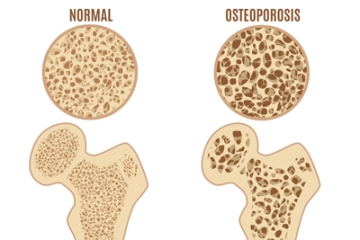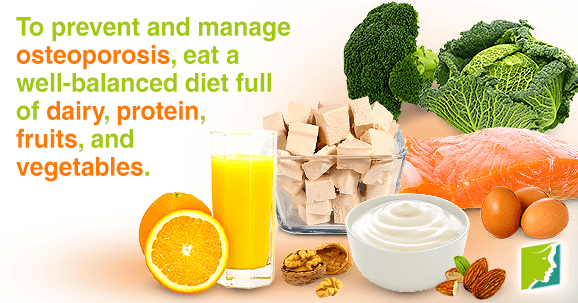
Osteoporosis can strike at any time and typically affects women over the age of 50 compared to men of the same age group. Age, sex, ethnicity, family history, and your bone structure are all factors that make a person more likely to have osteoporosis in their lifetime. Unfortunately, these risk factors cannot be changed, yet there are some that can be changed (Owczarzak and Weinreb-Welch, 2021). It’s important to take a look at these factors so that we can increase our longevity.
Hormones: low estrogen levels due to menopause or missing menstrual periods in women and low testosterone levels in men can lead to osteoporosis.
Nutrition: a diet low in calcium and vitamin D raises the risk of bone loss. Consider consuming more fat free or low dairy products, kidney beans, chickpeas, black beans, navy beans, dark leafy green veggies like broccoli, spinach, bok choy, collards, calcium fortified products like orange juice and cereal, etc. These are loaded with calcium.
Medication Use: some medicines increase the risk of osteoporosis. Activity level: lack of exercise or long-term bed rest can weaken bones.
Alcohol intake: consuming more than two or three alcoholic beverages a day can cause bone loss that can lead to broken bones.
Smoking and tobacco: using tobacco is linked to decreased bone density.
Anorexia nervosa: an eating disorder characterized by excessive dieting that can increase the risk for bone loss and osteoporosis.

Take action steps if you would like to reduce your risk of bone loss or fractures. Make a journal notating four categories labeled: “My risks, What Do I currently Do, What Would I like to Change, and How I Plan to Change”. Below these phrases, fill in the answers in a table format. Create a S.M.A.R.T. goal to help make the first steps to a better you. This type of goal is specific, measurable, attainable, realistic, and timely. For example, your goal may be “I would like to reduce my risk for osteoporosis by increasing my calcium intake with at least one meal for each day of the week for 3 months until a habit is formed. I plan to do this by adding broccoli to my salads, or choosing a low fat or fat free yogurt for breakfast or a snack, etc.”
In conclusion, anyone is susceptible to osteoporosis, however we are at greater risk postmenopausal, over the age of 50, sedentary, smoker, anorexic, consume a diet low in calcium or vitamin D, or drink more than 2-3 alcoholic beverages a day. If any of these risk factors describe you, try creating a SMART goal to reduce your risk.
Reference:
Owczarzak, Dori and Weinreb-Welch, Lori. “Are You at Risk for Osteoporosis?” PennState Extension, 2021.
